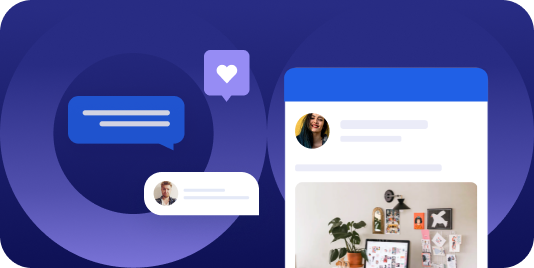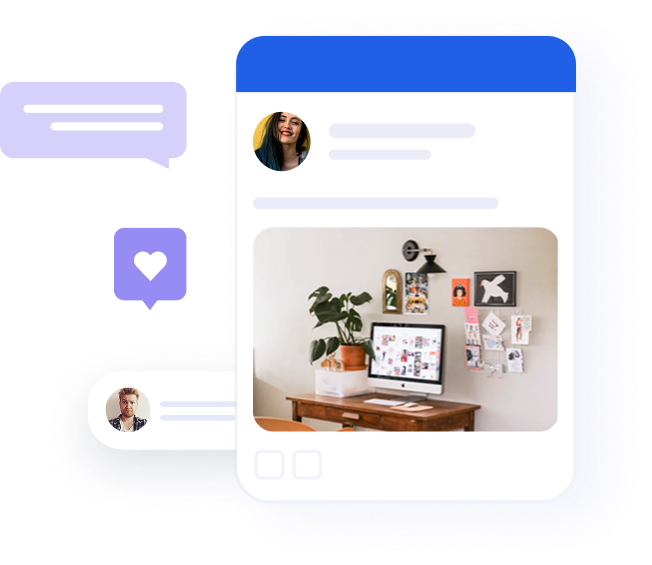8 Demand generation tactics to implement in 2024

Table of contents
Demand generation trends change super fast, so you need to adjust your demand generation tactics as well.
One day, you’re generating demand with a stellar email campaign; the next, you need to jump on LinkedIn live with an industry influencer to create buzz around a new product feature. Yet, as tempting as it is to follow what competitors are doing, you must focus on what your customers want to see.
67% of marketers admit they need an up-to-date understanding of their customers’ needs and preferences, which hinders their ability to meet demand generation objectives. Why is this crucial? Knowing your customers’ pain points and desires is step one in creating targeted campaigns that resonate deeply, driving engagement and conversions.
But before you inject your money and time into a detailed consumer analysis, you should understand the key trends in demand generation strategies this year.

Demand generation in 2024: What’s changed?
The rise of social media
One of the most significant changes is the rise of social media as a powerful demand-generation engine. Platforms like LinkedIn, Twitter, and Facebook are now indispensable tools for connecting with potential customers, building brand awareness, and nurturing leads. Social media trends such as live video, short-form content, and interactive polls reshape how B2B brands engage with their audience.

Harnessing the power of social media for demand gen
AI and automation
The integration of AI and automation technologies has revolutionized demand generation. Marketers can now access richer data and insights and powerful demand generation tools to leverage them. These tools enable hyper-personalized campaigns, optimized targeting, and streamlined workflows. This data-driven approach ensures marketing messages resonate with the right audience at the right time, maximizing their impact.
The regulatory landscape
The regulatory landscape has also tightened, demanding a more ethical and transparent data collection approach. Marketers must navigate regulations like GDPR and CCPA while ensuring their demand-generation efforts comply with privacy laws and industry standards.
Messaging changes
In addition, the demand for personalized, no-fluff messaging has intensified. B2B buyers are bombarded with information, making it crucial to deliver concise, relevant, and highly targeted content. Engaging visuals and video content are also prominent since they offer a quick and compelling way to capture attention and convey complex information.
Influencers
Finally, influencer marketing has emerged as a potent tool for demand generation. Partnering with influencers who are industry experts or thought leaders can significantly increase your brand’s reach and credibility, generating demand among their followers.
Types of demand generation
B2B demand generation is categorized into three overarching strategies, each with a unique approach and tactics:
Inbound marketing
This approach centers on attracting potential customers through valuable content and experiences. The goal is to draw in interested prospects organically by providing the information they need to move through the sales funnel. Inbound demand generation tactics include:
- Creating informative blog posts
- Optimizing your website for search engines (SEO)
- Sharing engaging content on social media platforms
- Hosting informative webinars and podcasts
Outbound marketing
This demand generation strategy involves proactively reaching out to potential customers. In practice, tactics used to raise brand awareness and generate leads include:
- Sending targeted email campaigns
Running paid advertising campaigns on search engines or social media platforms
Conducting cold calls
Traditional advertising channels like billboards, TV ads, and web ads
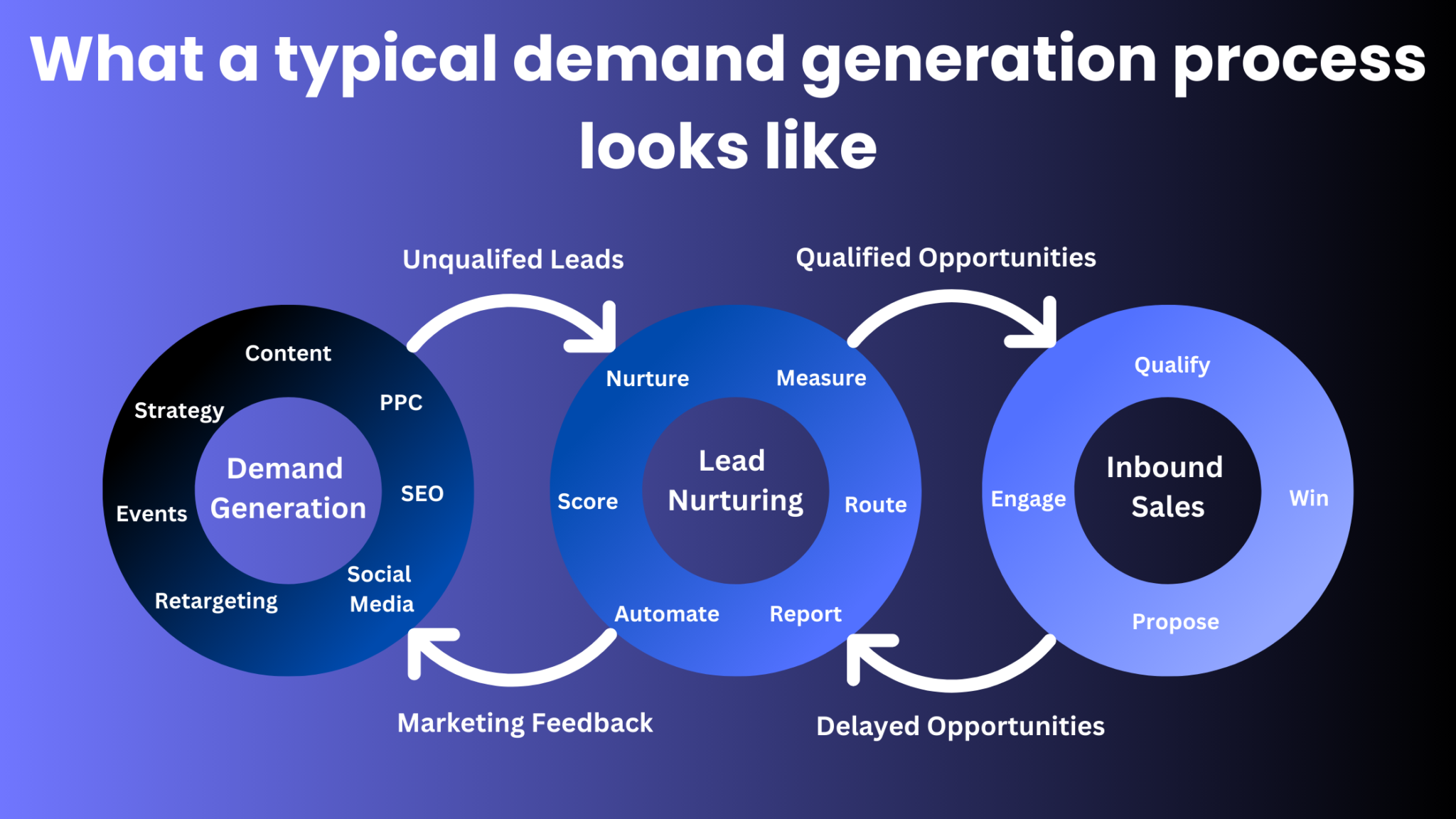
Account-based marketing (ABM)
This highly targeted approach focuses on engaging specific, high-value accounts with content tailored to their unique needs and challenges. ABM demand generation may include:
- Hosting exclusive events or webinars for critical accounts
- Engaging decision-makers at target accounts through personalized emails, calls, or social media interactions
- Partnering with influencers to promote your offerings to their followers
- Cross-promoting products or services in collaboration with other businesses
Recommended for further reading
8 demand generation tactics for 2024
1. Content personalization through first-party data
With growing concerns about data privacy and third-party data’s declining effectiveness, leveraging your audience insights is more important than ever. Personalizing content experiences to individual prospects based on interests, behavior, and demographics can significantly improve engagement and conversion rates.
Social listening and analytics tools like Oktopost enable you to gather valuable first-party data to segment your audience. With this data, you can create content that speaks to their needs. This could additionally involve analyzing website visits to determine a lead’s interests and then sending them targeted follow-up emails or providing customized product recommendations based on their browsing history.
2. Webinars and virtual events
In an increasingly remote-first world, webinars and virtual events offer a cost-effective and scalable way to connect with a global audience and drive demand for your products or services.
These interactive online events provide a platform for thought leadership, nurturing relationships with potential customers, and showcasing your expertise.
Promote your webinars across social media channels and email lists, track registrations and attendance using marketing automation platforms, and leverage interactive features like polls and Q&A sessions to boost engagement. To extend the reach of your content, consider offering on-demand recordings.
3. Employee Advocacy
Today’s B2B buyers highly value authenticity and trust, so leveraging your employees’ voices can be a game-changer. Encouraging your team to share company content on their social networks amplifies your brand’s reach, fosters trust with potential customers and showcases the human side of your organization.
Employee advocacy platforms like Oktopost streamline this process by curating content, tracking engagement, and recognizing top performers. A successful program relies on a workplace culture that values employee voices and encourages them to authentically share their passion for the company’s mission.
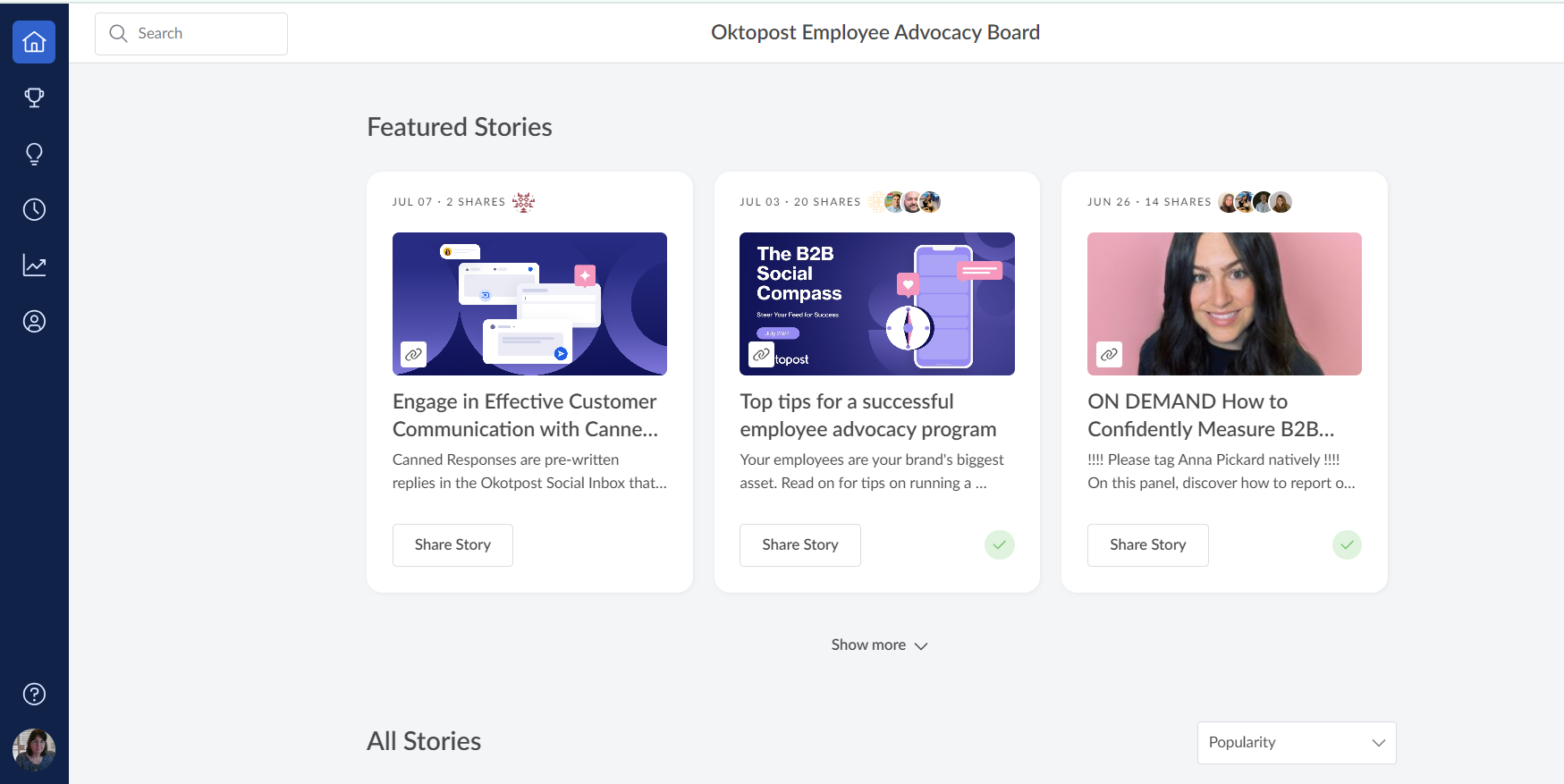
4. Personalized email campaigns
Despite the rise of newer messaging channels, email remains a cornerstone of B2B demand generation, boasting a track record of increased engagement and conversion rates. Its direct nature allows personalized messaging that resonates with individual prospects, leading to higher open, read, and click-through rates.
First, segment your email list based on demographics, interests, and behaviors to foster stronger customer relationships and drive meaningful actions through personalized email. Next, craft compelling subject lines and messages that speak directly to each recipient. Utilize A/B testing to refine your campaigns and improve their effectiveness over time.
5. Influencer partnerships
We live in an influencer world, where 57% of Gen Z said they would become an influencer if given the opportunity. But what about putting them to work for your business? Industry influencers can directly promote your products or services to their audience, boosting brand awareness, credibility, and trust.
Identify industry thought leaders and subject matter experts whose values align with your brand and whose audience overlaps your target market. Collaborate on content creation, co-host webinars, or leverage their platform for sponsored posts and testimonials.
Micro-influencers or brand advocates with smaller, niche followings can often yield higher engagement rates and more authentic connections with potential customers. Track the impact of your influencer partnerships through metrics such as reach, engagement, and lead generation to ensure a positive ROI.
6. Social media advertising
With the increasing saturation of organic reach on social media platforms, paid campaigns have become vital for B2B marketers to reach their target audience effectively. Platforms like LinkedIn, Twitter, and Facebook offer unparalleled targeting capabilities that allow you to streamline your audience based on demographics, interests, and behaviors.
Targeting your message to reach the most relevant prospects increases the chances of engagement and conversion. Social media management platforms can run your ad campaigns, track performance, and optimize them for maximum ROI. Alternatively, you can use native advertising platforms each social network provides for more granular control.
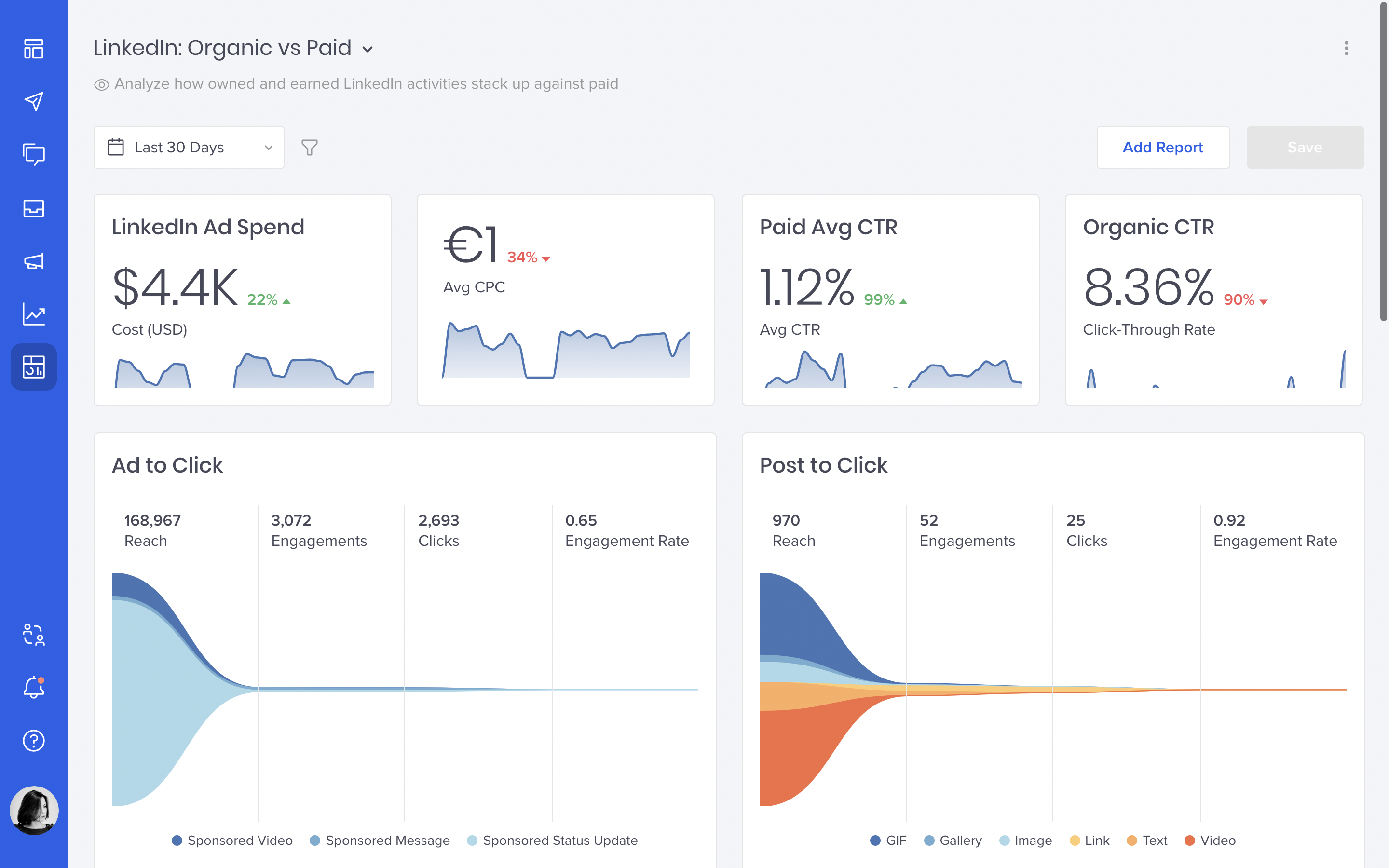
7. Personalized website experiences
B2B buyers increasingly expect tailored experiences, so personalizing your website content becomes a crucial differentiator. You can adjust your homepage, highlight relevant case studies, or present personalized product recommendations based on firmographic data or previous interactions. You can also adopt dynamic pricing based on customers’ needs, creating a more engaging and relevant experience for your high-value prospects.
Tools like website personalization platforms or content management systems (CMS) with personalization capabilities can help you achieve this customization level and increase the likelihood of conversions.
8. Bespoke content hubs
Along with personalized websites, delivering hyper-relevant content can significantly impact your ABM efforts in 2024. Developing dedicated content hubs or microsites for each target account filled with curated, tailored content like fresh demos demonstrates a deep understanding of their specific challenges.
This tactic positions your business as a trusted advisor, nurtures stronger relationships, and drives conversions. You can utilize CMS or ABM platforms to create and manage these personalized content hubs.
Unlock your demand generation potential with Oktopost
Demand generation in the B2B landscape is about more than casting a wide net and hoping for some fish. It’s about understanding your audience deeper, customizing your approach to your target’s unique needs, and leveraging a multi-faceted strategy encompassing fresh inbound, outbound, and ABM tactics.
Oktopost empowers marketers to implement these strategies effectively with its comprehensive social media management, employee advocacy, and analytics tools. The robust platform automates routine tasks, provides valuable insights into audience behavior, and amplifies your message across social channels—streamlining your demand generation efforts and boosting your ROI.
Request a demo to discover how Oktopost can help you plan, execute, and measure a successful B2B social media demand generation strategy at scale.
